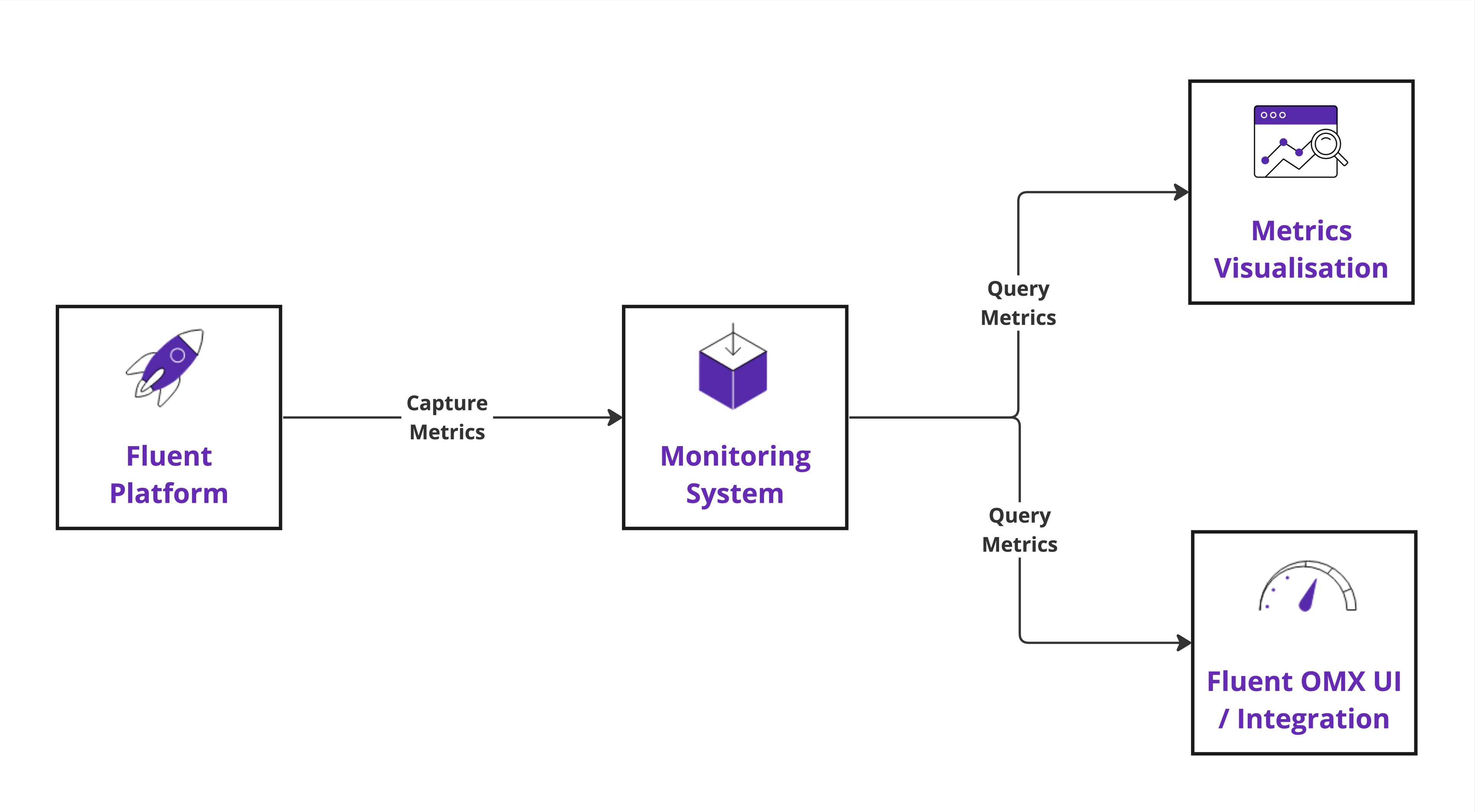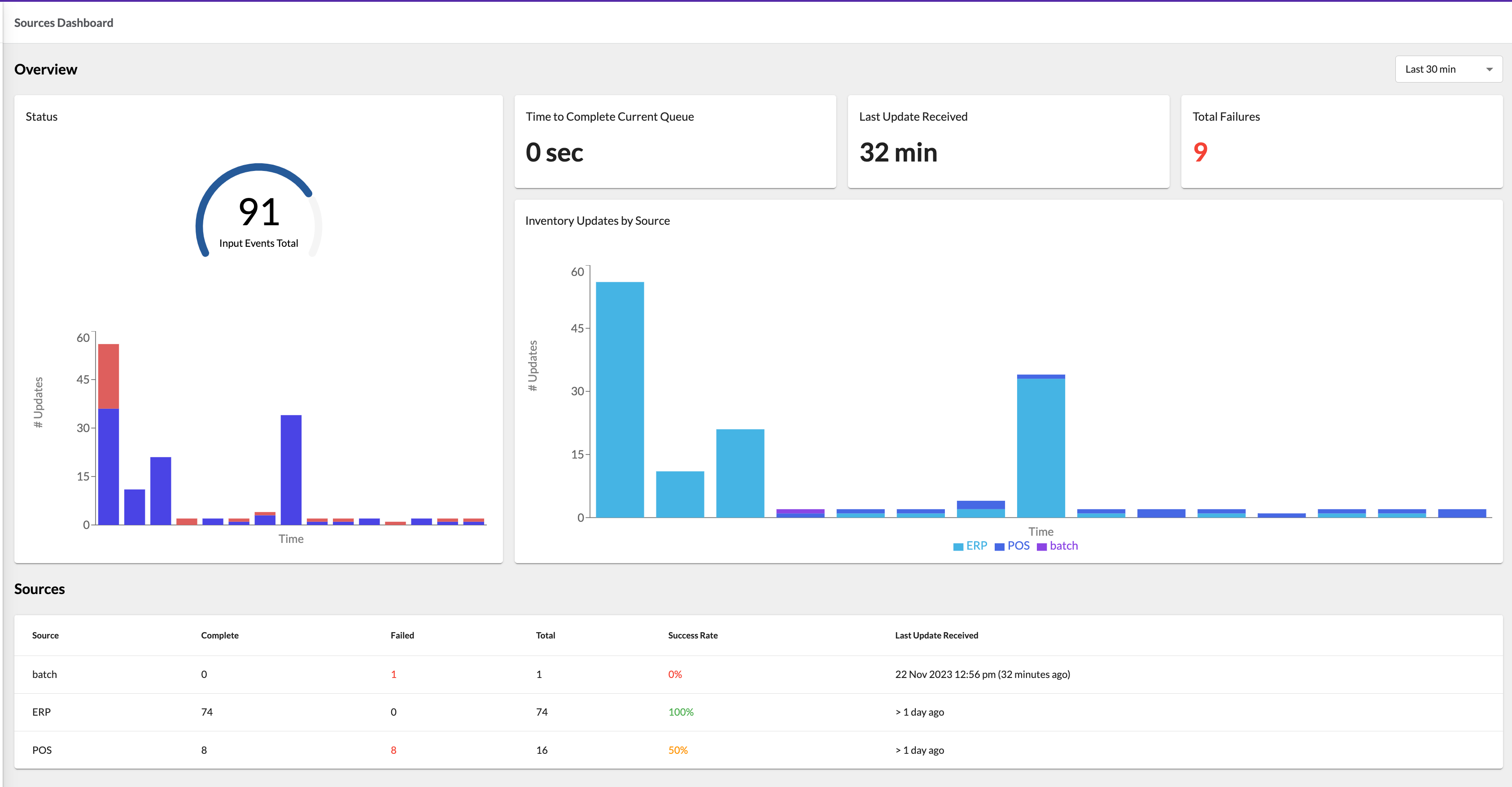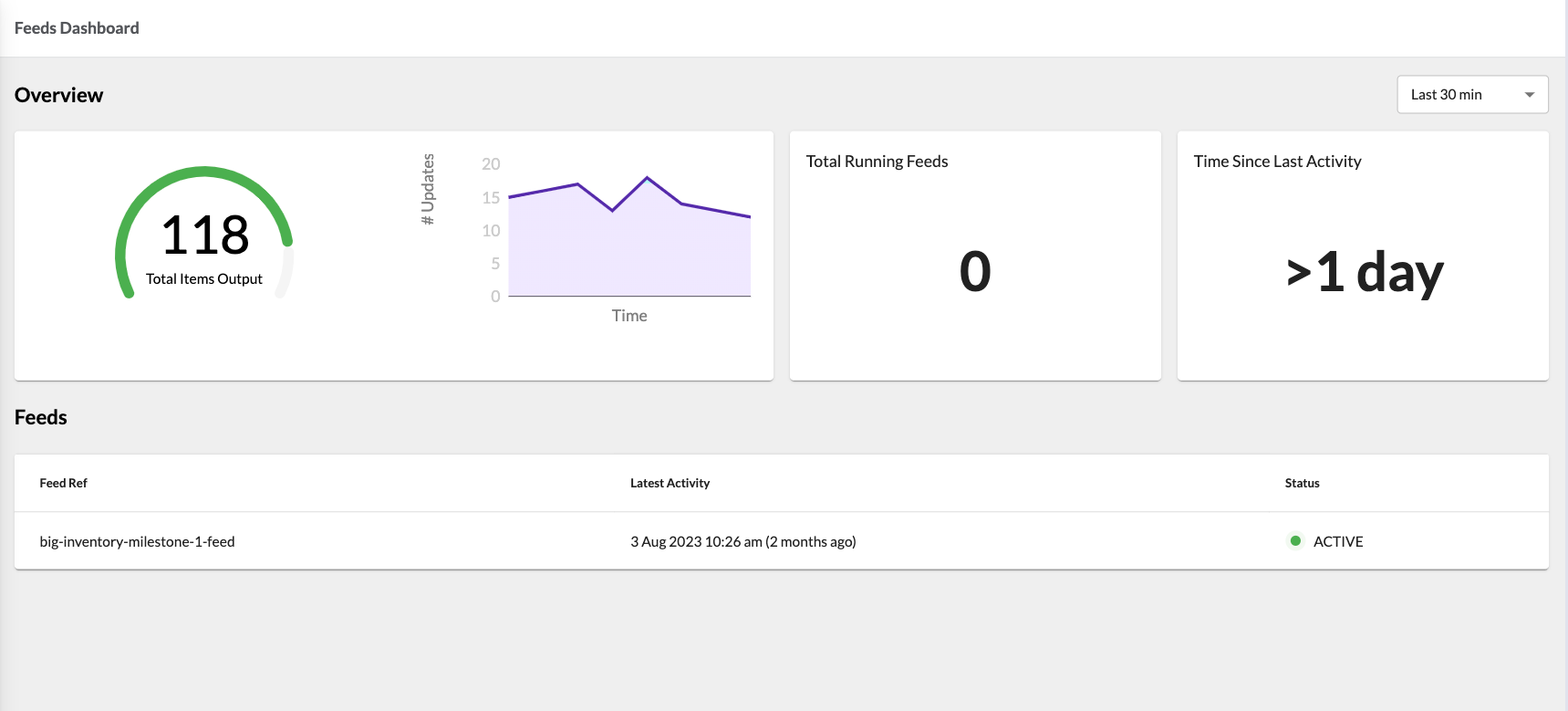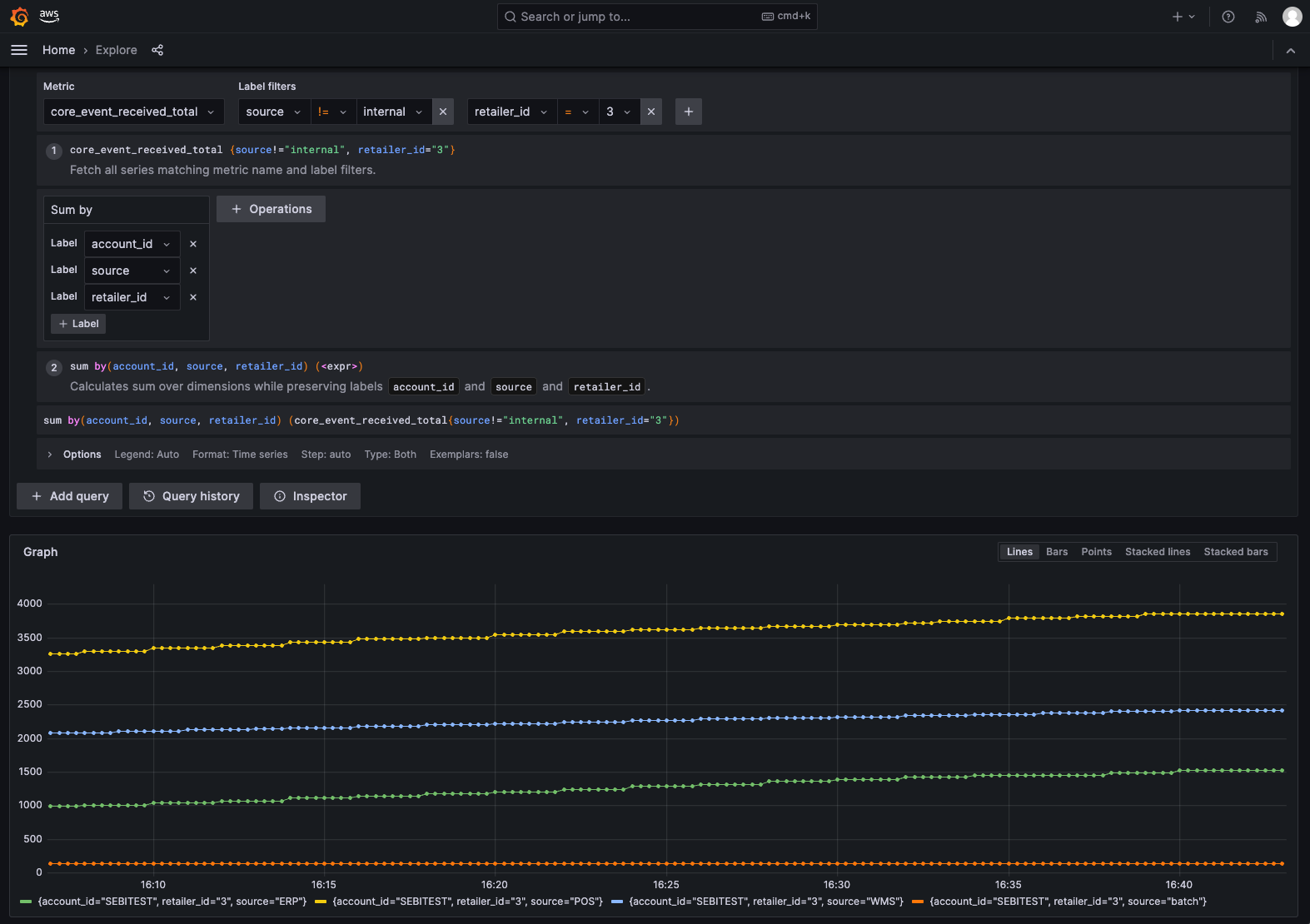What are Metrics for?
Metrics data visualization provides visibility of Fluent platform operational data and allows to monitor and observe platform/inventory availability and orchestration insights.
Value Proposition
Metrics enablement brings the necessary tools to:
- Improve the visibility and insights of the Fluent platform.
- Identify potential problems or anomalies in the Fluent platform before an escalation into critical issues.
- Provides an aggregate view of the internal state of the platform, allows the detection of problems quickly, reduces the time spent diagnosing issues, and speeds up the resolution process.
Functional Model
There are two main stages to achieve the objective of improving the visibility/insights of the Fluent Platform:
- Metrics capturing
- Metrics querying

Features
Metrics enable the following functionality:
Capturing, uploading, and storing Metrics Data
While the Fluent platform and applications process customers' requests, the instrumentation is integral to the Fluent application source code to enhance processing visibility and capture the Metrics. The Fluent Platform source code is instrumented to collect Metrics and upload those Metrics data into the Metrics workspace. The Metrics workspace is then queried to retrieve the Metrics data.
Note
For more details, check the Metrics Managing Flow section described in the How Metrics works article.
Available Metrics Data
The following Metrics data is currently available:
- General:
- The number of events received by the Fluent platform.
- The last timestamp of events received by the Fluent platform.
- The number of events received by the orchestration engine (Rubix).
- The amount of time an event stays in the internal queue.
i.e., the time after Fluent API sends the event and before Rubix receives the event. - The amount of time the orchestration engine (Rubix) takes to execute an event.
- Inventory specific:
- The amounts of all batch items processed, filtered out and considered “changed” by the Batch Pre-Processing job.
- The timestamp for when the given Batch Pre-Processing operation has completed.
- The total number of records exported by the Inventory Feeds job, split by data type.
- The timestamp for when the Inventory Feeds job is completed.
For more details, check the Available Metrics section described in the Metrics usage for Platform Observability article.
Querying Metrics Data
The Metrics monitoring system provides a dimensional data model and flexible query language to select the Metrics data and aggregate the time series data in real-time.
See the Query Syntax section described in the Getting Started with Metrics API article for query details.
Note
For more details, check the Metrics API Querying Flow section described in the How Metrics works article.
Available Metrics Queries
The following Metrics GraphQL queries are created in terms of a Reference solution to retrieve the Metrics data:
`metricInstant` GraphQL query is used to query one instant vector, for example:- The total number of events received by Fluent APIs.
- The total number of events received by orchestration engine (Rubix).
- The total number of failed/successful events processed by orchestration engine (Rubix).
`metricRange` GraphQL query is used to query range vector, for example:- The average time of event execution in orchestration engine (Rubix).
- The average time of event waiting in the queue.
For more details, check the Queries section described in the Getting Started with Metrics API article.
Visualizing Metrics Data
Metrics API query operations provide the necessary Metrics data to display the charts, diagrams, and dashboards.
Customer Metrics data could be visualized by hooking up the Metrics query data with:
1. OMX UX Framework, for example:


2. Metrics analytics and visualisation platforms. For example:




